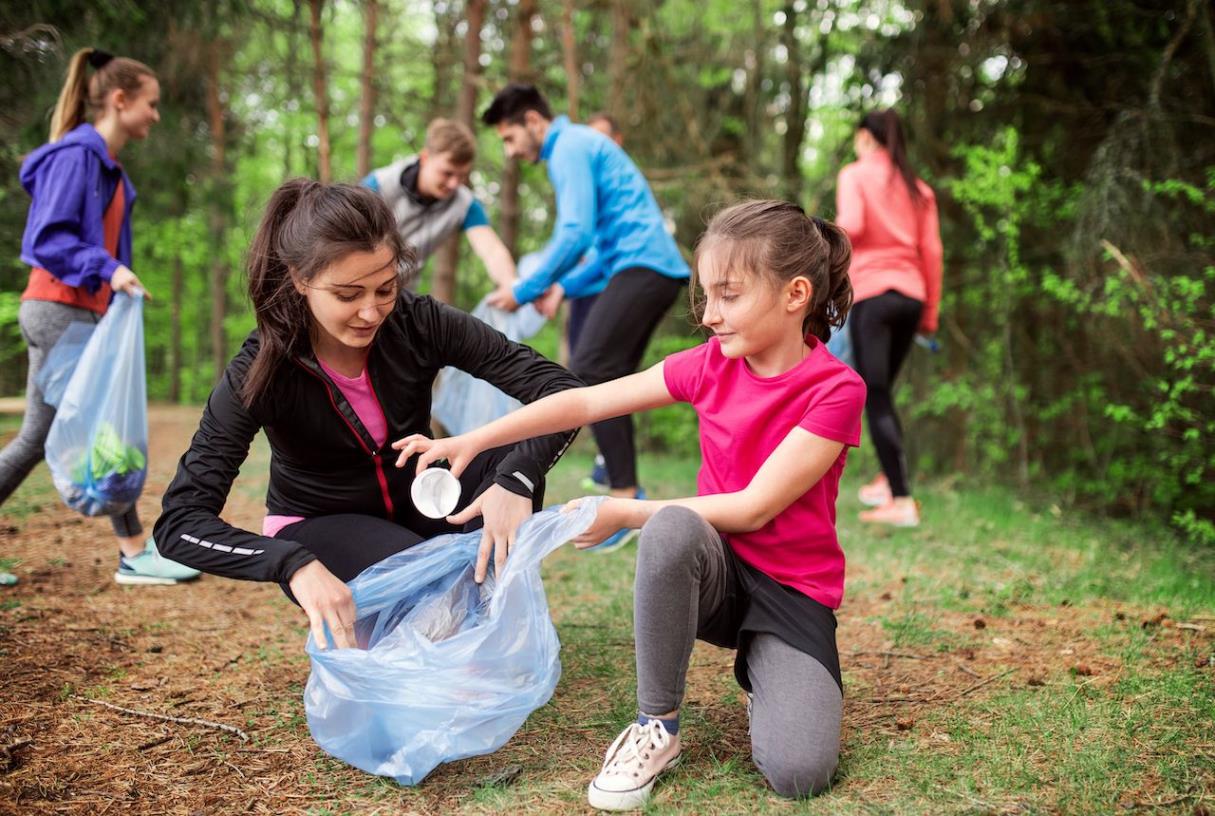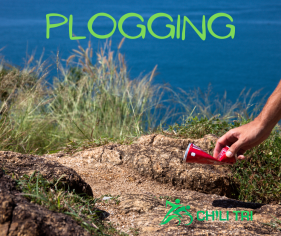Plogging- Helping the Environment as you Run
 Karen Parnell
May 23, 2021
Karen Parnell
May 23, 2021
Plogging- Helping the Environment as you Run
What is Plogging?
Have you ever spotted rubbish on your run routes and thought how much it is ruining your local area not just aesthetically but environmentally?
The statistics about plastic pollution can certainly be overwhelming. Every year, we produce 380 million tons of plastic and around 8.8 million tons of it get dumped in the oceans, threatening countless animals, many of which are on the verge of extinction as a result. If that wasn’t bad enough, it’s now estimated that by 2050, there will be more plastic in the ocean than fish.
You can do you bit to help by trying plogging once a week when out running
Plogging is a combination of jogging with picking up litter (merging the Swedish verbs plocka upp (pick up) and jogga (jog) gives the new Swedish verb plogga, from which the word plogging derives). It started as an organized activity in Sweden around 2016 and spread to other countries in 2018, following increased concern about plastic pollution.
As a workout, it provides variation in body movements by adding bending, squatting and stretching to the main action of running, hiking, or walking. Plogging can help you get your strength training and stretching into your schedule easily!
Plogging is considered a perfect activity, as it is positive both for the body, your mind, and for the environment. An estimated 2,000,000 people Plog daily in 100 countries and some plogging events have attracted over 3,000,000 participants. This can be done in urban areas and out on trail runs.
Download your FREE trail runnng 8-plan.
Maybe this could be extended to carrying a small bag with you when you go cycling or when you are open water swimming and do the same? Clogging and Swogging maybe? You could organise a group or do it solo, there are no rules just one common aim to do more to clear up waste products and re-cycle them.
So, if you are not trying to smash a new PB or on a recovery run with no pressure why not Plog once a week on a trial run or urban run to make your local environment more pleasant, help the planet and also add variety to your weekly sessions?
Want to try Plogging on your next urban or trail run? Download your FREE trail runnng 8-plan.
Some UK Litter Statistics:
- Litter costs almost £1 billion a year in clean up bills nationally
- 30 million tonnes of litter are collected from our streets every year - enough to fill four Wembley Stadiums
- Chewing gum costs local authorities £20,000 a year to clean
- 99% of streets in town centres have cigarette litter
- 62% of people in England drop litter - but only 28% will admit to it
- Cigarette butts make up one-third of all litter in the UK and can be found on 99 per cent of town centre streets. Each cigarette butt contains lead, arsenic and thousands of other chemicals. They do not biodegrade, and young children and wildlife are particularly at risk from ingesting them.
Organised Plogging Events
There are organised Plogging events around the world and for me my local one is annually in the city of Malaga.
On the 16th September this year Malaga has another Plogging event

Download your FREE trail runnng 8-plan.
During the day, guided physical exercises for all ages and levels, and sports activities such as hiking, diving, running or cycling were combined with garbage collection, through inclusive and participatory methods accessible to all people.
Under the motto 'Do sport for the planet' there was different plogging activities along the Gualdamedina river, in the city of Malaga, with the purpose of promoting climate action, the care of the seas and oceans and the Sustainable cities and communities within the framework of Sustainable Development Goals 11, 13 and 14.
Heart-healthy lifestyle habits, caring for biodiversity and corporate volunteering, together with the elimination of single-use plastics and proper recycling, were the main themes that the 'Nationale-Nederlanden Plogging Tour' community promoted in the city of Malaga.
There are events in Madrid, Barcelona, A Cruna, Bilboa, Malaga, Valencia and Ibiza. You can get involved with Blogging here.
Conclusion: Plogging
Embracing plogging is a wonderful way to combine your passion for running with a commitment to environmental stewardship. By picking up litter during your jogs, you not only enhance your physical fitness but also contribute to cleaner, more beautiful communities.
It's a simple yet impactful practice that benefits both your well-being and the planet. So, on your next run, consider bringing along a bag and gloves—together, we can make a difference, one step at a time.
Download your FREE trail runnng 8-plan.
Would you like to talk about your training or get a coach? Get in touch here.
Karen Parnell is a Level 3 British Triathlon and IRONMAN Certified Coach, 8020 Endurance Certified Coach, WOWSA Level 3 open water swimming coach and NASM Personal Trainer and Sports Technology Writer.
Karen is currently studying for an MSc in Sports Performance Coaching at the University of Stirling.
Need a training plan? I have plans on TrainingPeaks and FinalSurge:
I also coach a very small number of athletes one to one for all triathlon and multi-sport distances, open water swimming events and running races, email me for details and availability. Karen.parnell@chilitri.com
Get your FREE Guide to Running Speed and Technique
Get your FREE Swim Workouts for Triathletes E-book
Get your FREE Open Water Swimming Sessions E-Book
What is plogging?
Plogging is a combination of jogging (or running) and picking up litter. It originated in Sweden and has gained popularity worldwide as a fitness and environmental activity. Ploggers actively collect trash while they exercise, making a positive impact on the environment.
How did plogging start?
Plogging started in Sweden in 2016 as a way to combat litter and promote fitness. It quickly gained popularity and spread to other countries around the world.
How do I plog?
Plogging is simple and easy to do. Follow these steps:
- Put on comfortable athletic clothing and appropriate footwear.
- Bring a bag or container to collect the litter you find.
- Start jogging or running at your preferred pace.
- As you go, keep an eye out for litter or trash on the ground.
- Whenever you spot litter, safely pick it up and place it in your bag or container.
- Continue jogging and repeat the process as you encounter more litter.
What are the benefits of plogging?
Plogging offers several benefits, including:
- Environmental impact: Plogging helps keep the environment clean by reducing litter pollution and preventing trash from entering waterways or harming wildlife.
- Physical exercise: Plogging combines cardiovascular exercise with strength training, as you engage your muscles while picking up litter.
- Mental well-being: Being outdoors, connecting with nature, and making a positive contribution to the environment can improve mental well-being and boost mood.
- Community engagement: Plogging can inspire others to join the movement, fostering a sense of community and encouraging responsible waste disposal.
Can anyone plog?
Yes, anyone can participate in plogging! It is a versatile activity that can be adapted to various fitness levels and age groups. Whether you're a beginner or an experienced runner, you can modify the intensity and duration of your plogging sessions to suit your capabilities.
Where can I plog?
Plogging can be done almost anywhere, including parks, neighbourhoods, beaches, trails, and city streets. Choose areas that are safe for running and where litter is commonly found. It's important to respect private property and follow local laws or regulations while plogging.
What should I do with the collected litter?
After your plogging session, properly dispose of the collected litter in designated waste bins or recycling containers. Separate recyclables from non-recyclables when possible. If you come across hazardous materials or large amounts of trash, it's best to report it to the appropriate authorities for proper handling.
Are there any safety considerations for plogging?
Yes, consider the following safety tips for plogging:
- Wear appropriate footwear to protect your feet and maintain stability.
- Be mindful of your surroundings and avoid busy roads or unsafe areas.
- Use proper lifting techniques when picking up litter to avoid injury.
- Stay hydrated and take breaks as needed, especially in hot weather.
- Wash your hands thoroughly after your plogging session, as some litter may be unsanitary.
Can plogging be done in groups or organized events?
Absolutely! Plogging can be done individually or as part of a group or organized event. Many communities and organizations organize plogging events to raise awareness about environmental issues and promote community involvement. Participating in group plogging activities can be fun, social, and increase the collective impact.
Remember, plogging is a simple and impactful way to combine fitness with environmental stewardship. By incorporating plogging into your exercise routine, you contribute to a cleaner and healthier environment while staying active.
What do I need to start plogging?
To start plogging, all you need is comfortable workout clothes, a pair of good running shoes, and a trash bag or other receptacle for picking up litter. Some ploggers also wear gloves to protect their hands.
Where can I go plogging?
You can go plogging anywhere that you jog or run. Some popular places to plog include parks, beaches, and city streets.
Is plogging safe?
Plogging is generally safe, but it's important to take precautions to avoid injury. Watch where you're running to avoid tripping over litter or other obstacles and be careful when picking up sharp objects.
How can I get involved in plogging?
You can get involved in plogging by joining a local plogging group or organizing your own plogging event. You can also go plogging on your own or with friends. You can also see events and movements at the Ploggingworld.org website.
How can I promote plogging in my community?
You can promote plogging in your community by organizing a plogging event, sharing information about plogging on social media, or talking to local schools, clubs, or organizations about starting a plogging program.
References
Plastic Statistics - Lawnstarter
Plogging.org website Plogging

#plogging #greenrunning #triathloncoach #triathlon #swimming #running #cycling #trainingcamps #trianingplans #chilitri #openwaterswimming #swimmingtrainingplan #cyclingtrainingplan #runningtrainingplan #swimming #cycling #running

